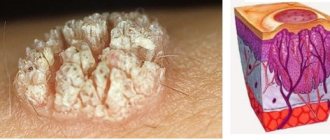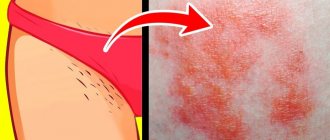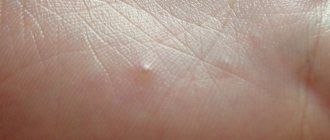A boil is a painful formation on the skin, which is a hemisphere with pus inside. Often a boil appears suddenly - in just a few hours, so it can cause big problems for those people who are involved in public relations and are constantly “in sight”. For ordinary people, the appearance of a sore also causes quite a few problems - the purulent area becomes inflamed, hurts and bothers almost every movement. Why do boils appear? In what ways can they be removed from the body? This article will help answer these and other questions.
What is a boil
Among the people, the boil has a different, more common name - boil. The second term is not used in medicine, so the official name of the disease in which an abscess appears on the skin is furunculosis. A boil is a purulent core that is located under the skin, and on top, in the form of a hemisphere, there is only a small part of dead skin cells. Boils are often confused with pimples - they are the same size, approximately 2-3 mm, purulent in color, but the boil is more painful and a reddish ring appears around the abscess.
Chiri can appear on any part of the skin, but most often it occurs in the armpits, buttocks, neck, groin or in places where hair predominates. Boils most often occur in autumn or winter, a time when there is little sunlight.
how to get rid of atheroma using folk remedies
How many days does it take for a boil to ripen?
To find out how long a boil takes to mature, you need to understand the stages of its development. 3 stages:
- A bulge appears on the affected area of the skin. It is accompanied by itching and lasts for 3 or 4 days.
- The boil matures and a purulent core forms in it. This stage lasts about 3 days.
- The boil opens and heals within 3 days.
How long does it take for a boil to mature? Based on the above, we can conclude that the duration of ripening is from 1 to 1.5 weeks.
What methods can harm
Furunculosis should be treated under the supervision of a doctor. It is not recommended to trust the advice of friends or dubious folk methods given on the Internet.
Methods (actions) that will aggravate the problem:
- improper use of medications. Ichthyol ointment is not applied after opening the abscess. Vishnevsky ointment is not used in areas with sensitive skin (face, groin area, ear, nose) and is not used in the first stage of boil development. At the stage of healing and granulation, it is forbidden to treat the wound with disinfectant solutions;
- improper use of home methods, failure to comply with proportions, incorrect combination with medications;
- treatment at home for boils with a diameter of more than 5 mm;
- untimely application, replacement of lotions;
- It is not recommended to warm up the chiryak yourself;
- washing the tumor using soap and household chemicals;
- You cannot open the abscess yourself. Piercing with an unsterile instrument leads to blood poisoning and sepsis.
Methods to accelerate maturation
Local treatment is used. Antibiotic therapy is used when chiria is found on the face and ear, when the diameter of the neoplasm is more than 5 cm. In other cases, drug therapy and physical procedures are performed to accelerate the maturation of the abscess.
READ ALSO: Nodule on the neck or why you need to know the cause of lymphadenitis
Ointments and creams
The action of ointments and creams is aimed at relieving painful symptoms and drawing out pus. It is necessary to regularly smear the boil so that it goes away faster.
For treatment with ointments, it is advisable to use thin gauze bandages, otherwise local hyperthermia occurs (increased body temperature at the site of inflammation). Ointments can be applied to the damaged area.
Lotions
Compresses and lotions should not put pressure on the affected area. Use 3-4 times a day, duration – no more than 20 minutes a day. To make a new boil ripen faster, bandages are made from clean gauze and lubricated with herbal decoctions and creams.
How to prepare lotions:
- use lotions from herbal decoctions (chamomile, coltsfoot, lemon balm) - help reduce pain;
- compresses using ichthyol ointment accelerate ripening;
- lotions made from a yellow film of the bark of oak branches. The raw materials are poured with boiling water and steamed. Apply a piece of bark to the sore spot and fix it.
Solutions
Hypertonic sodium chloride solution is used to make the boil mature and rupture. It is necessary to treat the bandage with the solution and apply it to the affected area. If the medicine is not available, you can prepare it yourself by mixing 1 tbsp. salt with 0.5 tbsp. chilled boiled water.
Other
The physiotherapeutic method used is ultraviolet radiation (UVR). The boil matures faster and breaks through. The dosage is prescribed by the doctor.
READ ALSO: 6 ways to exfoliate your skin
Traditional methods that can be used to quickly break through a boil and relieve painful symptoms:
- smear the abscess with aloe juice at night;
- apply lotions from herbal decoctions;
- spread the new growth with baked onions (you can’t use fresh ones, it leads to burns);
- rinsing with brewed strong black tea;
- The boil will burst faster if you anoint the damaged area with grated boiled beets - cut in half and apply with the cut down. Beets draw out pus.
Before using traditional methods, a sensitivity test of the components is first carried out. To begin with, use the product on a healthy area of skin.
Why do boils appear on the skin?
The main reason for the appearance of boils is an excessive amount of staphylococcus and streptococcus bacteria. The rods of these dangerous microorganisms penetrate the hair follicle, cause inflammation, which is why pus appears. In a healthy body, the quantitative content of this type of bacteria is normal. Only during illness do they multiply intensively and are localized in a more vulnerable area of the skin.
Why can intensive proliferation of staphylococci and streptococci occur?
- Violation of personal hygiene rules. Due to the fact that a person is careless about his cleanliness, an imbalance of beneficial and harmful bacteria can occur. Rarely washing your body and hands, and insufficient skin care are one of the main reasons for the appearance of boils.
- Weakening of the immune system. Very often, due to periodic illnesses, the immune system is weakened and the ability to fight harmful organisms is reduced. Furunculosis can begin in people with diabetes who have undergone chemotherapy or radiation, as well as in patients with AIDS and HIV infections.
- Purulent formations on the skin can appear due to gastrointestinal diseases, hormonal disorders or diseases of the endocrine system.
- Boils often appear in places where it is constantly damp and wet. They can also occur when the body is hypothermic or overheated.
Since the main cause of boils is a bacterial infection, it can either begin to develop intensively or maintain the same balance. It all depends on how strong a person's immune system is.
Reasons for appearance
Staphylococcus, like many other bacteria, is part of the skin microflora and in ordinary life does not cause any harm. When favorable conditions are created, these microorganisms are activated, their numbers increase, and the result of their vital activity is a purulent-inflammatory process.
A boil, like any other abscess, can occur as a result of:
- decreased immunity;
- damage to the skin (bacteria penetrate inside through microtraumas);
- excessive sweating combined with poor or complete lack of personal hygiene;
- metabolic or hormonal imbalance;
- dysfunction of the endocrine system;
- chronic infectious diseases;
- hypothermia.
The formation of a pustule is preceded by a combination of unfavorable factors developing against the background of reduced immunity.
Diagnostics
To diagnose the disease, the following types of procedures should be performed:
- Visual inspection of education;
- Taking a general blood test;
- A study of discharge from a boil is carried out to identify the type of bacteria that causes inflammatory formation;
- Study of the reasons that contributed to the decrease in immunity.
If necessary, the specialist may prescribe additional types of diagnostics.
Attention! This is important when self-medicating!
If you suspect that the pustule that has arisen is not a pimple, but a boil, consult a doctor immediately. He will prescribe you medications that will quickly cope with such an unpleasant disease. However, if you do not have time and rely only on your own strength, please note that under no circumstances should the boil be picked, pierced or squeezed out! Remember, furunculosis is a bacterial infection! From just one abscess, it can spread throughout the body if you neglect caution and start squeezing it out yourself.
The best thing you can do is to lubricate the infected area with brilliant green or iodine, or in extreme cases, treat it with hydrogen peroxide. Once again, it’s worth remembering: you can’t squeeze out or pierce a boil yourself!
how to get rid of the habit of squeezing pimples
When to contact a surgeon
Boils can be treated at home only for those who are not at risk (do not suffer from chronic diseases), and boils are small in size (up to 5 mm). You should not self-medicate in the following cases:
- if the appearance of a formation is accompanied by intense pain and fever;
- if the abscess has not opened within 2 weeks;
- if furunculosis has developed;
- if the abscess occurs in a small child;
- if the boil is near the nose, lips, in the ear canal;
- there was a relapse of the disease.
Ointments
Levomekol
Anti-inflammatory and at the same time a healing agent. The drug not only helps the boil to ripen faster, but also promotes its healing.
Ichthyol ointment
It copes well with the function of drawing out purulent contents. In addition, it has antibacterial properties.
Its negative features are an unpleasant smell.
Vishnevsky ointment
Improves and accelerates tissue healing, as well as heparin, which also relieves pain.
How to get rid of a boil
There are two methods for getting rid of boils on the body:
- Conservative treatment
- Surgical treatment
The conservative approach is that the patient must periodically lubricate the damaged area of the body with salicylic or boric alcohol and monitor hygiene. If a high body temperature occurs, a course of antibiotics is prescribed. To speed up the process of natural opening of the boil, you can apply a warm, dry bandage.
Surgical treatment, that is, opening the boil, is carried out only by a doctor. After the main culprit of the purulent process, the rod, comes out of the wound, the wound is washed and a thin bandage with Vishnevsky ointment is applied to it. To prevent the infection from spreading to the nearest area, the wound is periodically lubricated with Levomekol or Ezithromycin ointment. They must be used until the damaged area of skin is completely healed. If the boil was too wide and its removal was quite difficult, a visit to the dressing room may be required.
In particularly advanced situations and when the body is too weak to fight a bacterial infection on its own, a course of immunotherapy may be prescribed. In order for the body to develop its own immunity to staphylococcus and streptococcus, special vaccines can be prescribed. In the most extreme cases, when boils have gone from single to multiple, a full course of antibiotics or even a blood transfusion may be required.
If you do not want to bring your sore to such an extreme outcome, immediately after the appearance of a strange tubercle, begin to take preventive measures. Remember, any disease is easier to cure at an early stage!
how to get rid of purulent acne at home
Treatment of furunculosis
Self-medication can cause phlegmon with further spread of bacteria. When squeezing out pus with hands or vacuum jars, premature opening occurs, which provokes further infection. If the rod does not completely come out, even more severe inflammation appears, requiring long-term treatment.
Important! When a fluctuation zone appears, sodium salicylate is applied to the inflammation three times a day, which is fixed with a dry bandage.
If there are a large number of boils on the body, it is recommended to take warm, but not hot, baths with the addition of potassium permanganate. The skin located around the inflammation is treated with a non-concentrated solution of furatsilin. Removal of pus is carried out under anesthesia.
After removing the pus, the wound is treated with peroxide and the following medications are prescribed:
- Levomekol.
- Erythromycin ointment.
- Syntomycin ointment.
Ointments for the treatment of furunculosis
At the stage of granulation tissue appearance, Vishnevsky balm and Ichthyol ointment are applied. This speeds up healing and prevents relapse of inflammation. UHF therapy is indicated. Taking antibiotics is necessary for a chronic type of disease or abscess formation of inflammation.
To boost the body's immune system, the following are indicated:
- ozone therapy;
- taking vitamins;
- gamma globulin;
- autohemotransfusion.
Surgical intervention
If a woman (man) realizes that the abscess will not open on its own, it is necessary to urgently consult a doctor - a deep subcutaneous abscess requires surgical intervention. Otherwise, the boil can break into the anatomical cavities, and this is fraught with complications including sepsis.
Surgical treatment is performed under anesthesia, most often local anesthesia is used. The boil is opened and drained, completely removing all purulent contents. Next, the wound is disinfected and stitches are applied if necessary. The patient should remain in the hospital under the supervision of a doctor for several days after the intervention.
In the postoperative period, the patient undergoes antibacterial therapy with local or systemic drugs. For better healing and to prevent further relapses, it is recommended to undergo a course of physical treatment.
Please understand that self-medication can be dangerous, so consult your doctor first before doing anything.
Folk remedies for removing boils at home
It is worth immediately noting that not all boils can be treated independently. Negative outcomes after an advanced illness have been written above, so you should not rely on fate, but rather visit a doctor. If you still decide to cope with the sore on your own, then take into account that traditional methods will only be effective if:
- Furuncle no more than 3 mm
- It is single and such an abscess is not observed on the body anymore
- For the first time in your life you see a current sore
- Your general condition is normal, you have always considered yourself a healthy person
- There is no elevated body temperature and there are no symptoms of complications at all
If all the conditions match your condition, here are some folk recipes that are aimed at eliminating boils.
- Honey cake.
The bottom line is this: in order for the boil to open faster on its own, naturally, you can prepare a honey cake. Mix honey with flour until a tight dough forms, form a cake and apply to the painful area. Secure with a bandage soaked generously in vodka or alcohol. Wrap it all in cling film. This is a very effective method! Sometimes only one procedure is enough and the boil goes away on its own! - Baked onions and camphor oil.
Bake the onion in the oven (peeled) and grate it (you can mash it with a fork). Add camphor oil heated in a water bath and apply to the area with the boil. The onion will bring all the pus out, and the remaining stem can be easily pulled out with tweezers. - Rye bread.
This method came to us from our grandmothers, but its effectiveness has been proven over time. The chiry comes out instantly, and the redness subsides if you chew a piece of black bread, add salt and apply it to the wound, and wrap the area in cling film. Salt will corrode the skin, bread will absorb pus. Everything is elementary and simple! - Aloe leaf.
The regular aloe leaf is also striking in its effectiveness. In order for the boil to open on its own, you can sprinkle the abscess with soda and apply a sheet of transverse cuts to the wound. Wrap in film. If necessary, repeat the procedure. - Potato.
A well-known remedy for any ailment is regular potatoes. It must be grated, made into a paste and applied to the problem area. Additionally, you can wrap it with film and warm cloth.
If you notice a boil on yourself, remember that this is an infectious disease, so you should be very careful when treating it yourself. The best option is to see a doctor! Be always healthy!
how to get rid of subcutaneous acne on the chin











